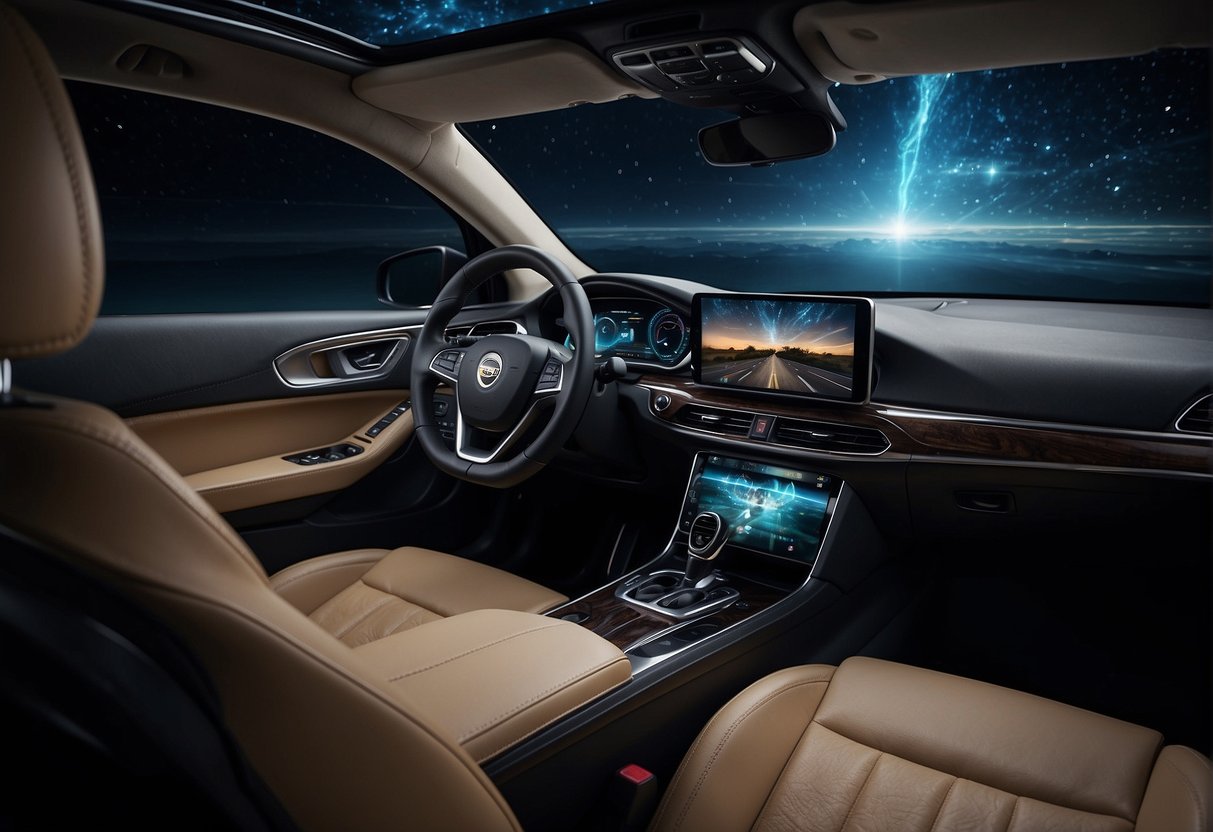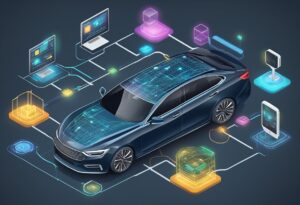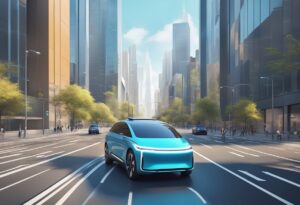Augmented reality (AR) technology is rapidly transforming in-car entertainment, offering a new level of immersive experience for drivers and passengers alike.
With the use of AR, drivers can now access real-time information on their surroundings, navigate with ease, and enjoy a range of digital entertainment options.
In this article, we explore how AR is reshaping in-car entertainment and the opportunities and challenges it presents.
The Evolution of In-Car Entertainment
In-car entertainment has come a long way since the days of AM/FM radio and cassette tapes.
Today’s cars are equipped with sophisticated infotainment systems that offer a range of features, from music streaming and hands-free calling to voice-activated controls and GPS navigation.
However, the rise of AR technology is taking in-car entertainment to the next level, offering a more immersive and interactive experience.
Augmented Reality Technology in Cars
AR technology in cars works by overlaying digital information onto the real-world environment, creating a mixed reality experience.
This technology is being used in various ways, from heads-up displays that project information onto the windshield to interactive dashboards that allow drivers to control various functions with hand gestures.
AR is also being used to enhance navigation and safety, providing drivers with real-time information on traffic, road conditions, and potential hazards.
Key Takeaways
- Augmented reality technology is transforming in-car entertainment, offering a more immersive and interactive experience for drivers and passengers.
- AR is being used in various ways, from heads-up displays to interactive dashboards, to enhance navigation and safety.
- The use of AR in cars presents opportunities for car manufacturers, app developers, and other stakeholders, but also poses challenges, such as ensuring driver safety and addressing privacy concerns.
The Evolution of In-Car Entertainment
From Radio to Augmented Reality
In-car entertainment has come a long way since the early days of radio.
Over the years, advancements in technology have transformed the driving experience, making it more engaging and immersive.
The evolution of in-car entertainment can be traced back to the introduction of CD players in the 1980s, which allowed drivers to enjoy their favorite music while on the go.
With the rise of digital media, the introduction of MP3 players and streaming services such as Spotify and Apple Music have made it easier than ever for drivers to access their favorite tunes.
As technology has continued to evolve, so too has the world of in-car entertainment.
Today, drivers can enjoy a wide range of entertainment options, from satellite radio and podcasts to movies and TV shows.
The introduction of touchscreens has made it easier for drivers to navigate these options, while voice assistants such as Siri and Alexa have made it possible to control in-car entertainment with simple voice commands.
The Role of Augmented Reality in Modern Vehicles
Augmented reality (AR) is the latest technology to revolutionize the world of in-car entertainment.
AR displays overlay digital information onto the real world, creating a more immersive experience for drivers.
In the context of in-car entertainment, AR can be used to provide real-time data about the surroundings, navigation instructions, and even interactive elements.
One example of this is the use of AR in navigation systems.
By overlaying digital directions onto the real world, drivers can receive turn-by-turn instructions without having to take their eyes off the road.
This not only makes navigation safer but also more engaging and immersive.
Another example of AR in in-car entertainment is the use of heads-up displays (HUDs).
HUDs use AR technology to project information onto the windshield, creating a more immersive experience for drivers.
This technology can be used to display a wide range of information, from speed and navigation instructions to entertainment options such as movies and TV shows.
Augmented Reality Technology in Cars
How AR Technology Enhances Driving
Augmented Reality (AR) technology is revolutionizing the automotive industry, particularly in enhancing the driving experience.
AR technology overlays digital information in the real world, superimposing computer-generated images, data, or information onto the windshield or a head-up display (HUD) in the car.
This technology enhances the driver’s perception of the environment, providing real-time, accurate, and relevant information while driving.
AR technology can provide drivers with a wide range of information, including traffic conditions, speed limits, directions, and even weather updates.
This information is displayed in real-time and can help drivers make informed decisions while on the road, resulting in safer driving.
Head-Up Displays (HUDs) and Their Functionality
Head-Up Displays (HUDs) are an essential component of AR technology in cars.
They project information onto the windshield, allowing drivers to access vital information without taking their eyes off the road.
HUDs can display a wide range of information, including speed, navigation, and even entertainment options.
HUDs are becoming increasingly popular in modern cars, with many automakers incorporating the technology into their vehicles.
Some HUDs can even connect to a driver’s smartphone, allowing them to access a range of apps and services while on the road.
Navigation and Safety
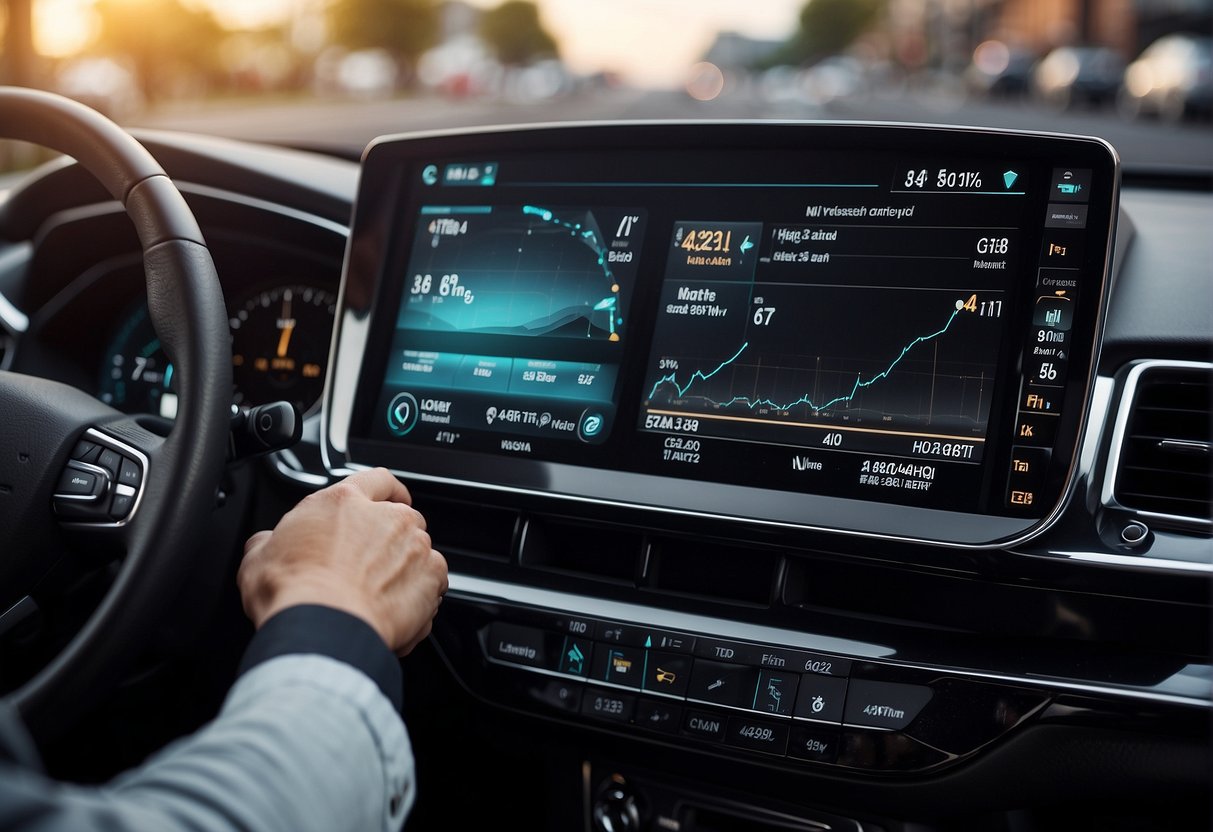
As augmented reality (AR) gains traction in the automotive industry, it is not just entertainment that is being transformed. Navigation and safety features are also being enhanced with AR technology.
AR for Improved Navigation Systems
AR-powered navigation systems provide drivers with a more intuitive and immersive experience.
Instead of relying on a flat map, AR overlays information onto the real-world view, making it easier to follow directions and find one’s way around unfamiliar terrain.
One example of this is the head-up display (HUD) system, which projects information such as speed, directions, and traffic onto the windshield.
This keeps the driver’s eyes on the road while still providing them with the information they need.
Enhancing Driver Assistance with AR
AR is also being used to enhance advanced driver assistance systems (ADAS) and other safety features.
For example, AR can be used to highlight potential hazards on the road, such as pedestrians or other vehicles, making it easier for drivers to avoid accidents.
AR can also be used to provide drivers with more information about their surroundings, such as the distance to the car in front of them or the speed limit of the road they are on.
This helps drivers make more informed decisions and stay safer on the road.
Immersive Experience for Passengers
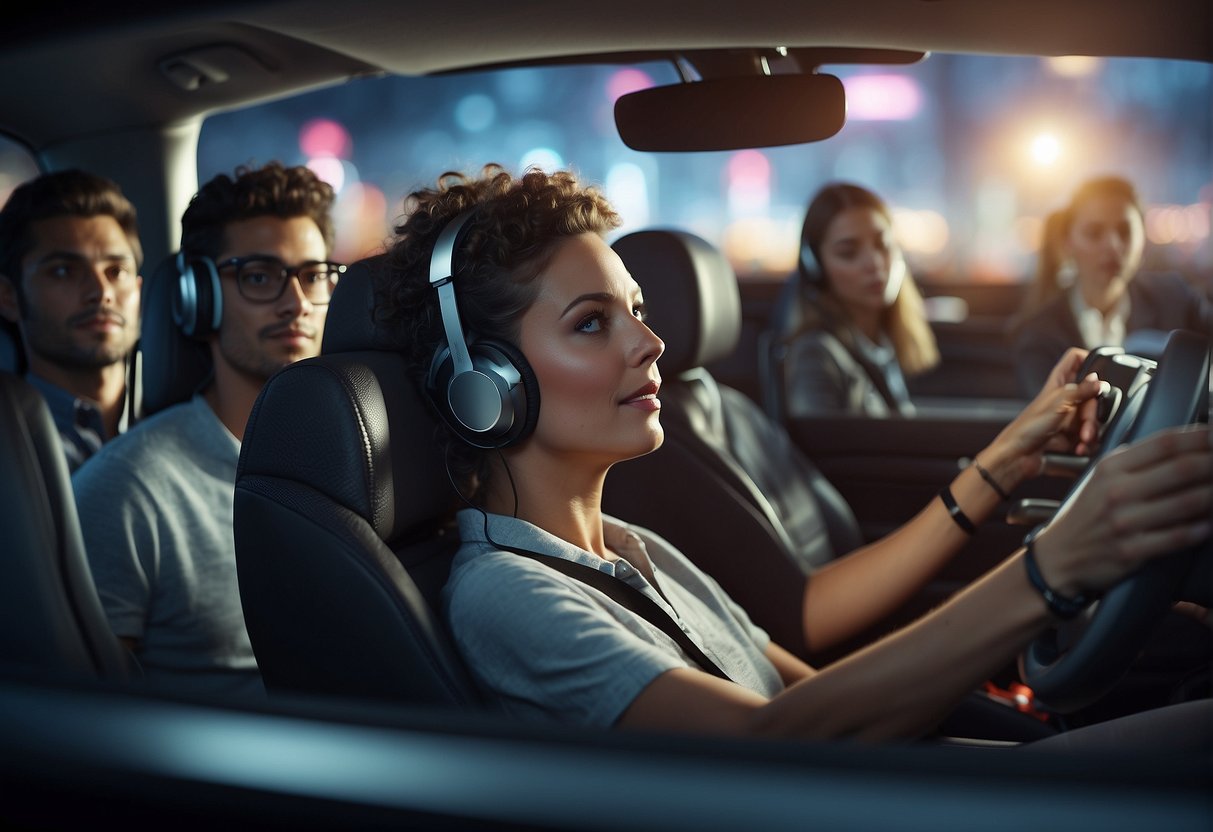
As augmented reality (AR) technology continues to evolve, it is reshaping the landscape of in-car entertainment, providing passengers with a more immersive experience than ever before. Here are some ways that AR is enhancing the in-car entertainment experience for passengers.
Entertainment Beyond the Windshield
AR technology is allowing passengers to enjoy entertainment beyond the windshield.
Passengers can now use AR-enabled devices to view movies, play games, and even interact with virtual environments while on the road.
This provides a more engaging experience for passengers, making long car rides more enjoyable.
Gaming and Movies in Motion
AR technology is also making gaming and movies more accessible in a moving vehicle.
Passengers can now enjoy their favorite games and movies on AR-enabled devices without experiencing motion sickness.
This is because AR technology can adjust the content to the movement of the vehicle, providing a smooth and comfortable experience for passengers.
Integration with Mobile Devices and Apps
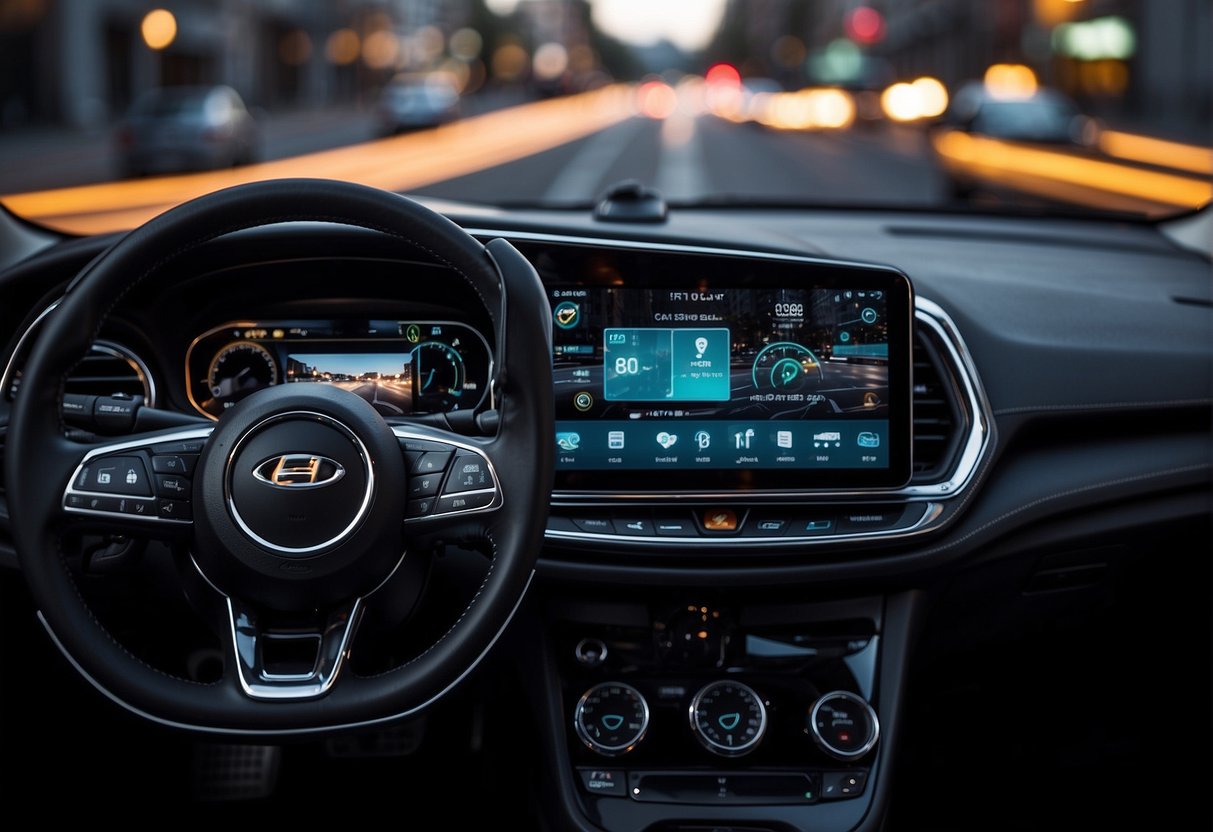
As augmented reality (AR) continues to gain traction in the automotive industry, the integration of mobile devices and apps is becoming increasingly important.
Smartphones and Tablets as AR Interfaces
Smartphones and tablets are ideal interfaces for in-car AR systems.
They provide a large, high-resolution display that can be easily mounted on the dashboard or integrated into the headrests.
In addition, they come equipped with a variety of sensors, such as GPS, accelerometers, and gyroscopes, which can be used to track the vehicle’s position and orientation.
One popular app that leverages these capabilities is Waze.
This navigation app uses AR to overlay real-time driving information onto the user’s view of the road.
For example, it can display turn-by-turn directions, traffic alerts, and even police sightings.
This information is displayed in a clear and intuitive manner, making it easy for drivers to stay informed and focused on the road ahead.
App Ecosystem for In-Car AR
The app ecosystem for in-car AR is still in its early stages, but it is rapidly evolving.
Both Android and iOS platforms offer a wide range of AR development tools and frameworks, making it easier than ever for developers to create AR apps for the automotive industry.
Google Maps is another popular app that has integrated AR technology.
It can display real-time information about nearby businesses, such as hours of operation, reviews, and photos.
This information is displayed in a 3D overlay, making it easy for drivers to see what’s around them without taking their eyes off the road.
The Business of AR in Automotive
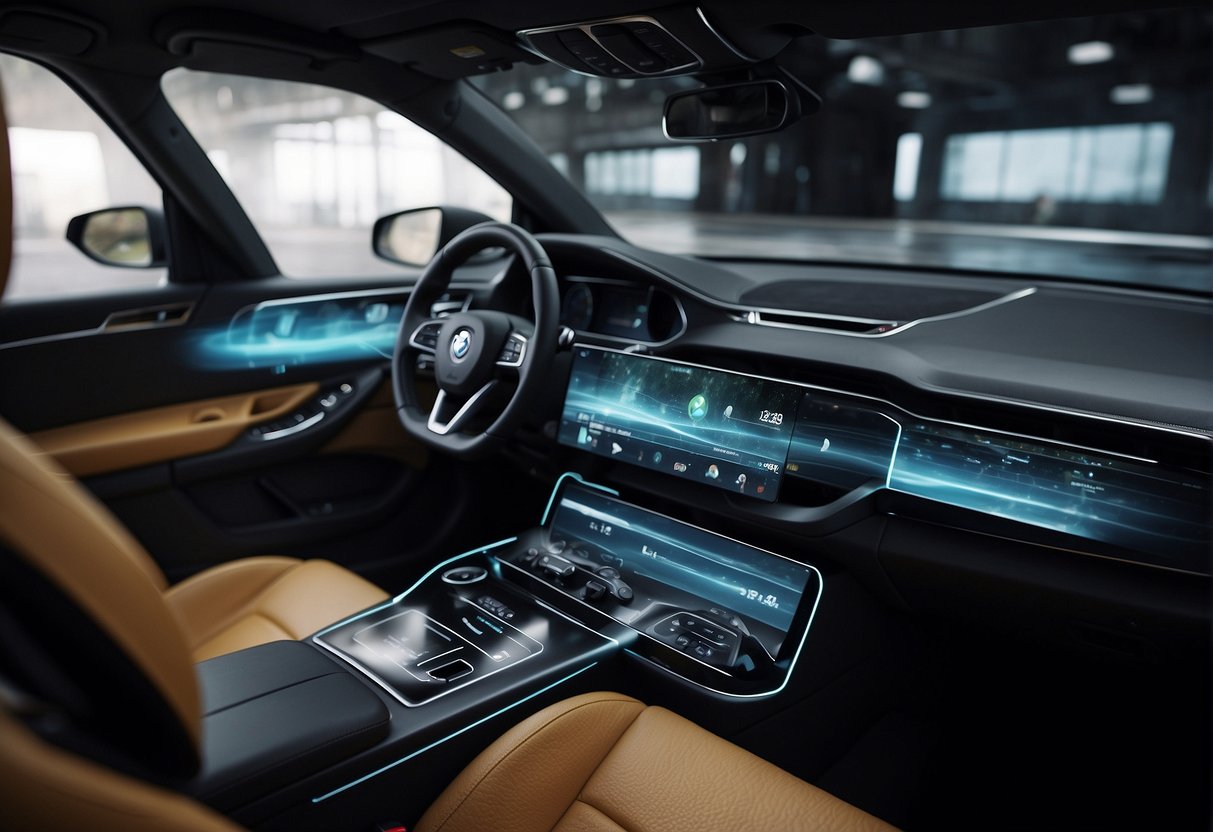
Market Trends and Industry Players
The automotive industry is currently one of the largest investors in augmented reality (AR) technology. With the increasing demand for in-car entertainment, AR has become a key player in reshaping the automotive industry.
The AR automotive market alone is predicted to reach a net worth of $673 billion by the year 2025.
Many automotive manufacturers and original equipment manufacturers (OEMs) have been developing AR solutions to enhance the driving experience.
For instance, Bentley offers augmented reality manuals and presentation guides that help sell the car by showing off its valuable features in the AR showroom.
Moreover, their augmented reality system makes the car experience more fun, as drivers can see navigation directions, take calls, and show 360-degree videos of the vehicle’s surroundings.
Other players in the industry include app development companies that focus on creating AR solutions. These solutions provide real-time, accurate, and efficient vehicle diagnostic and repair services.
These AR solutions are revolutionizing the automotive industry, particularly in vehicle diagnostics and repair.
Future Projections and Revenue Streams
The future of AR in the automotive industry looks promising. As AR technology continues to evolve, we can expect to see more innovative AR solutions that will enhance the driving experience.
AR technology has the potential to transform the way cars are designed, sold, driven, and maintained.
In terms of revenue streams, the AR automotive market is expected to grow significantly in the coming years.
The market is expected to be driven by the increasing demand for in-car entertainment, enhanced driving experience, and vehicle safety.
As more automotive manufacturers and OEMs invest in AR technology, we can expect to see a significant increase in sales and revenue.
Challenges and Considerations
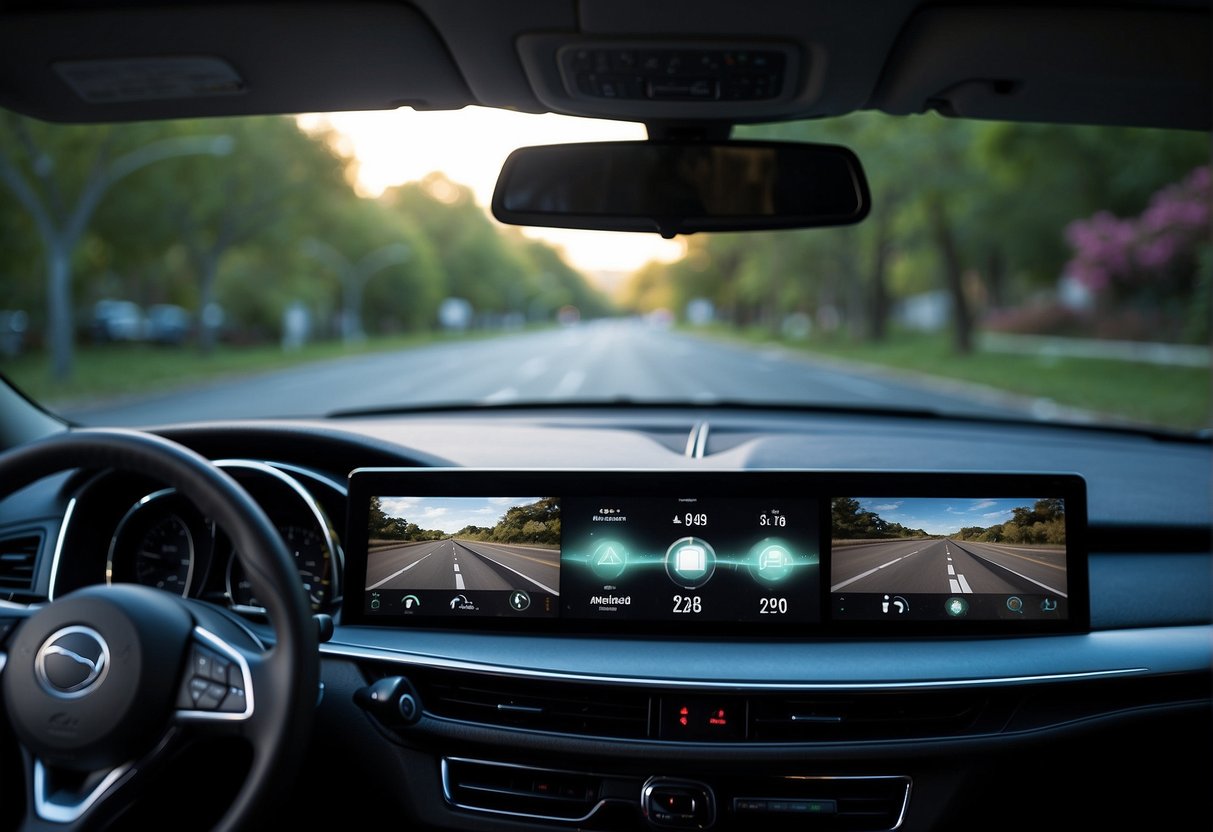
Ensuring Safety and Preventing Distractions
As with any new technology, safety concerns are a top priority when it comes to integrating augmented reality (AR) into in-car entertainment systems.
AR has the potential to offer a more immersive and engaging experience for drivers and passengers, but it also poses a risk of distraction and could potentially lead to accidents.
To address these concerns, it is important for automakers to ensure that AR features are designed with safety in mind.
This includes implementing safety features such as voice commands and hands-free controls to minimize distractions while driving.
Additionally, AR displays should be positioned in a way that does not obstruct the driver’s view of the road or create unnecessary glare.
Cost and Accessibility of AR Solutions
Another challenge that automakers face when implementing AR into in-car entertainment systems is the cost and accessibility of AR solutions.
While AR technology has become more affordable in recent years, it still requires significant investment to integrate into vehicles at scale.
Furthermore, accessibility is a concern for some drivers who may not have access to the latest in-car entertainment systems or who may not be comfortable using AR technology.
Automakers need to consider these factors when designing AR features to ensure that they are accessible to all drivers and passengers.
To address these challenges, automakers may need to consider partnering with technology companies or leveraging open-source AR solutions to reduce costs and improve accessibility.
Additionally, providing training and support for drivers who are new to AR technology can help to increase adoption rates and ensure that everyone can enjoy the benefits of this exciting new technology.
Looking Ahead: The Future of AR in Cars
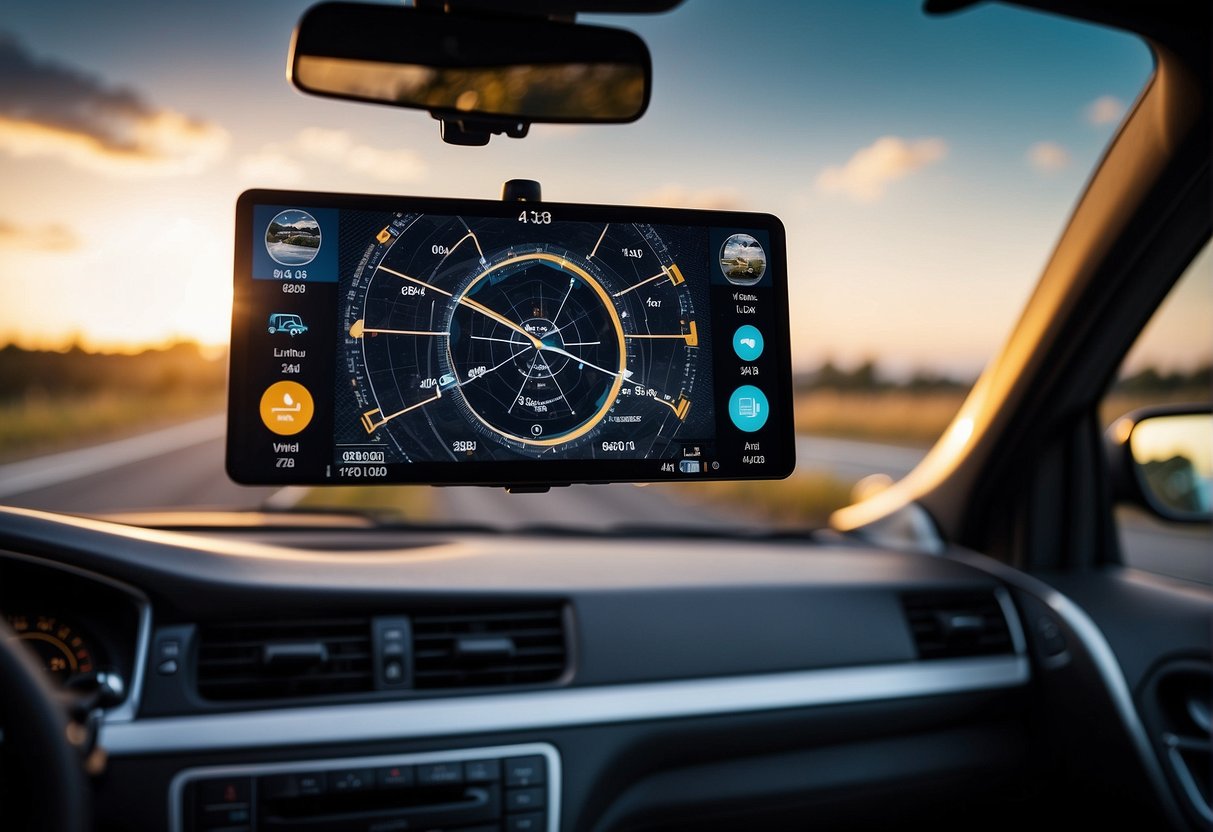
As augmented reality (AR) technology continues to advance, its integration with the automotive industry is becoming more prevalent.
With the rise of autonomous vehicles and the driverless future on the horizon, AR is poised to revolutionize the way we interact with our cars.
In this section, we’ll explore the potential innovations and advancements in AR technology that could shape the future of in-car entertainment.
The Convergence of AR and Autonomous Driving
One of the most exciting developments in the automotive industry is the convergence of AR and autonomous driving.
As self-driving cars become more prevalent, AR technology can be used to provide passengers with a more immersive and interactive experience.
For example, AR could be used to create virtual landscapes and environments that passengers can explore while the car drives itself. This could be especially appealing to long-distance travelers who are looking for ways to pass the time.
AR could also be used to enhance the safety of autonomous vehicles.
For example, smart glass could be used to display important information such as speed, directions, and traffic updates directly in front of the driver’s line of sight. This would allow drivers to keep their eyes on the road while still having access to important information.
Innovations on the Horizon
As AR technology continues to advance, we can expect to see a wide range of innovations in the automotive industry.
For example, wearables such as smartwatches could be used to control in-car entertainment systems using AR technology.
This would allow passengers to easily browse through music, movies, and other media without having to touch the car’s dashboard.
Another potential innovation is the use of AR to create personalized in-car experiences.
For example, the car’s entertainment system could use AR to create a virtual avatar of the passenger, which would then interact with the car’s systems in a personalized way.
This could include things like personalized music playlists, customized lighting, and even virtual companions that passengers can interact with.
Overall, the future of AR in cars is bright. As technology continues to advance, we can expect to see a wide range of innovative applications that will enhance the in-car experience for passengers and drivers alike.
Whether it’s creating immersive virtual environments or providing personalized entertainment options, AR is poised to reshape the way we interact with our cars.

